Nice, France – June 4, 2025 – During the One Ocean Science Congress (OOSC), Global ONCE hosted the themed session T2-5: Carbon Dioxide Removal Approaches — Effectiveness, Durability, Risks, as well as monitoring, reporting, and verification. The session focused on the core scientific and governance challenges of marine carbon dioxide removal (mCDR) technologies. Scientists from around the world engaged in in-depth discussions on technological approaches, ecological risks, economic assessments, and international governance frameworks.
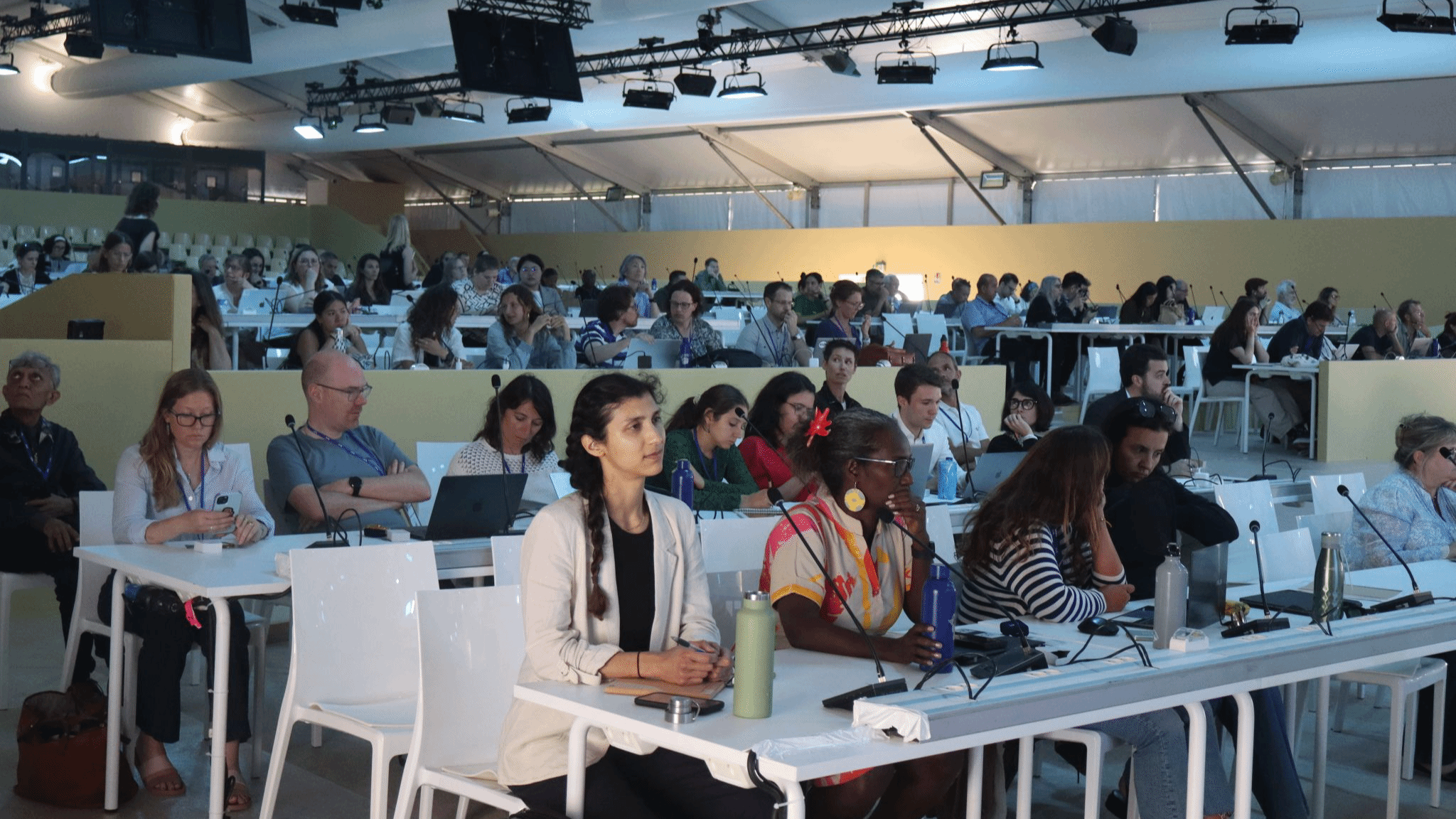
Chief Scientist: Building a Scientific Framework for Negative Emissions
In his opening keynote, Global ONCE Chief Scientist Academician Jiao Nianzhi emphasized that climate change has become a global challenge, with the continued rise in carbon dioxide emissions placing immense pressure on the ecosystem. The scientific community widely agrees that emission reduction measures alone—such as phasing out fossil fuels and improving energy efficiency—are no longer sufficient to meet the temperature control goals set by the Paris Agreement. As such, the global focus has shifted from “emission reduction” to achieving actual “negative emissions”. In recent years, with the advancement of ocean science and interdisciplinary integration, scientists worldwide have been exploring a range of ocean-based negative emission approaches—collectively referred to as Ocean Negative Carbon Emissions (ONCE).
In his keynote address, Academician Jiao provided a systematic overview of international progress in key areas, including Ocean Alkalinity Enhancement (OAE), large-scale seaweed cultivation and deep-sea carbon sinks, blue carbon ecosystem conservation and restoration, and the Marine Microbial Carbon Pump (MCP). He highlighted the original contributions of Chinese scientists to the development and application of the Microbial Carbon Pump (MCP) theory, which underscores the critical role of marine microbes in the production, transformation, and long-term storage of organic carbon—providing essential theoretical support for enhancing oceanic carbon sinks.
He further called for strengthened global scientific collaboration and interdisciplinary innovation, advocating for end-to-end advancements that integrate basic science, engineering, ecological protection, and policy governance. According to Jiao, ONCE is not only a new scientific frontier but also central to reshaping global carbon governance and securing a sustainable future for humanity.
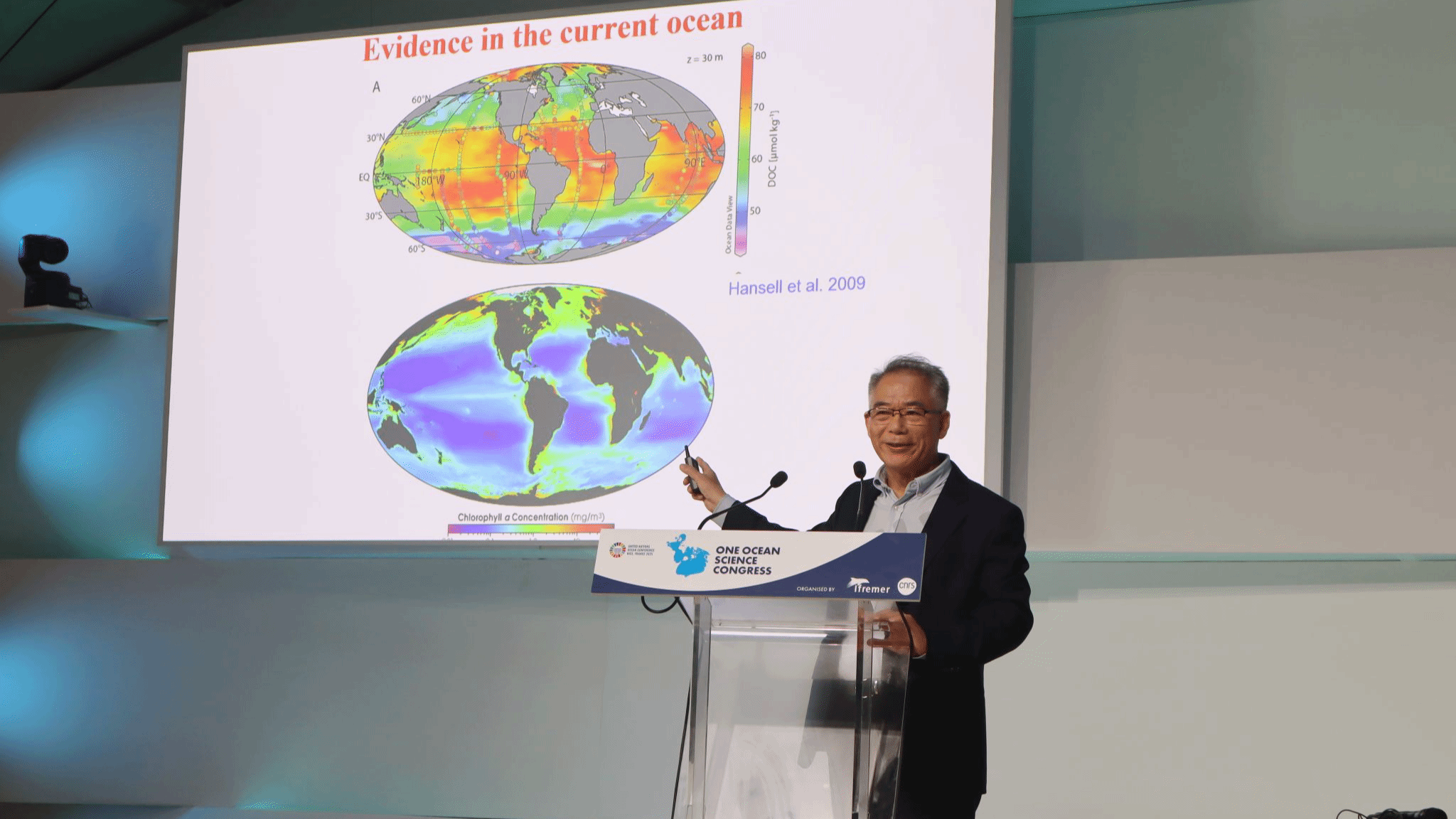
International Experts Discuss Technological Approaches and Risk Assessment
(1) Christopher Pearce: A Multidimensional Assessment Framework for Ocean Carbon Removal
Prof. Christopher Pearce from the UK’s National Oceanography Centre highlighted the immense potential of the ocean to store carbon—up to 20 times that of the Amazon rainforest. However, he stressed that unlocking this potential requires a careful balance between environmental safety, ethical considerations, and policy oversight. Presenting insights from the CHCdR project, Pearce underscored the importance of integrating technological feasibility, ethical evaluation, and cost analysis. He pointed to ongoing challenges such as underfunding and a lack of robust interdisciplinary collaboration. To address these issues, Pearce advocated for the creation of a unified assessment framework that could drive forward responsible innovation in marine carbon removal.
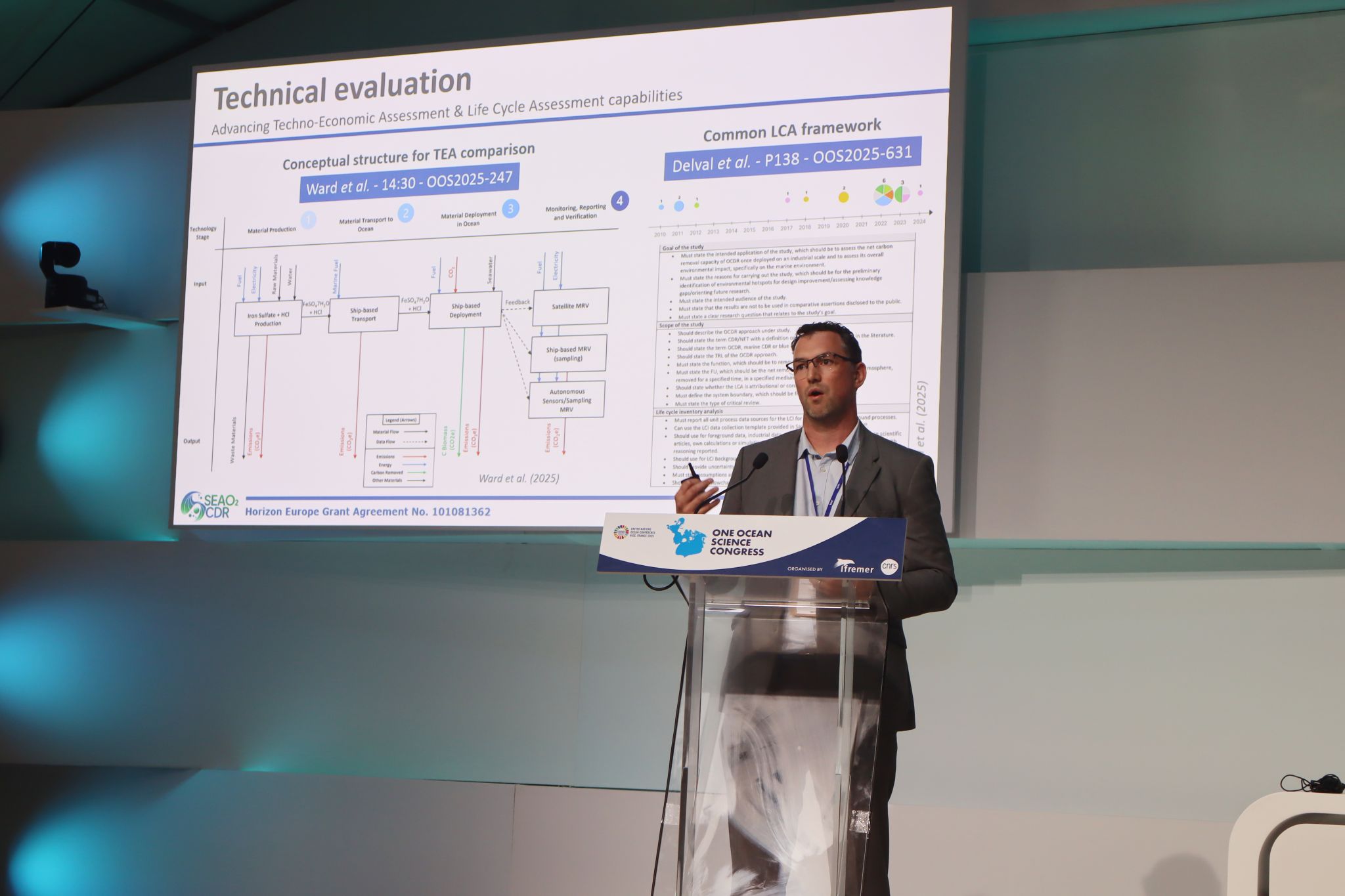
(2) Yubin Hu: Experimental Insights and Limitations of Olivine-Based Ocean Alkalinity Enhancement
Prof. Yubin Hu from Shandong University presented shipborne experimental data on the use of olivine as a method to enhance ocean alkalinity for carbon sequestration. The findings confirmed that olivine dissolution can increase seawater alkalinity and facilitate CO₂ removal. However, Hu pointed out several critical limitations: olivine dissolves extremely slowly—taking up to 200 years to fully break down—and the effectiveness of alkalinity enhancement is highly sensitive to ocean depth. For instance, at a depth of 62 meters, the elevated alkalinity persisted for less than 180 hours, significantly reducing the potential for effective carbon removal. To improve the cost-efficiency of this approach, Hu recommended learning from the Southern Ocean iron fertilization project, where a single verification experiment cost approximately $200. He argued that similar cost-benefit analyses could help refine the deployment strategy for olivine-based methods. Hu also stressed the urgent need for more field data to validate nature-based solutions at scale.
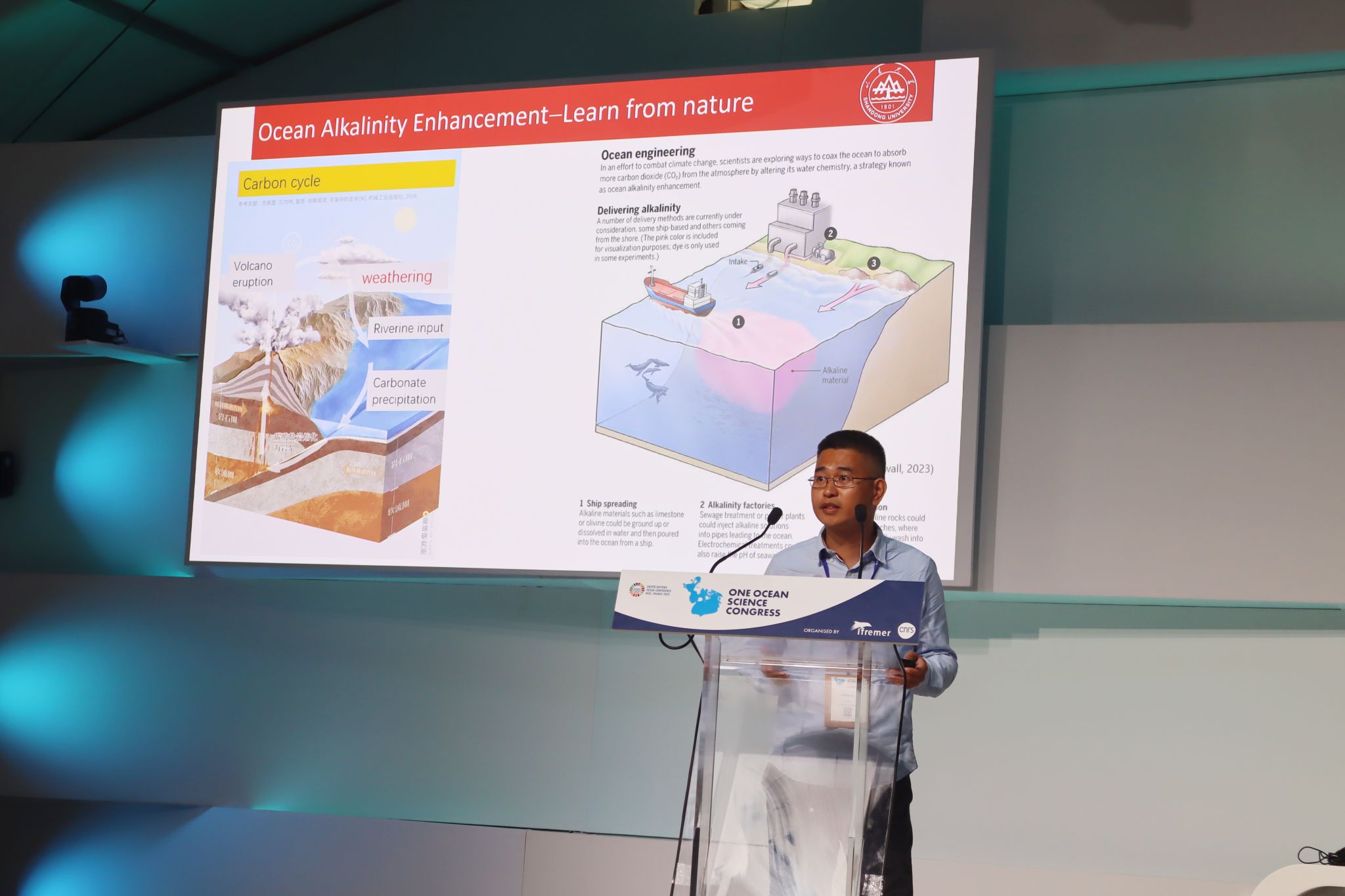
(3) Callum Ward: Ecological Risks of Iron Fertilization
Prof. Callum Ward from the University of Southampton presented modeling results suggesting that while iron fertilization can temporarily enhance the efficiency of the biological carbon pump, it may also accelerate ocean acidification and pose threats to marine biodiversity.He emphasized the importance of establishing a policy framework that prioritizes risk forecasting and ecological safeguards alongside climate mitigation goals. Ward called for a balanced approach—one that aligns bioremediation efforts with climate strategies—ensuring that technological applications do not come at the expense of the ocean ecosystem's health.
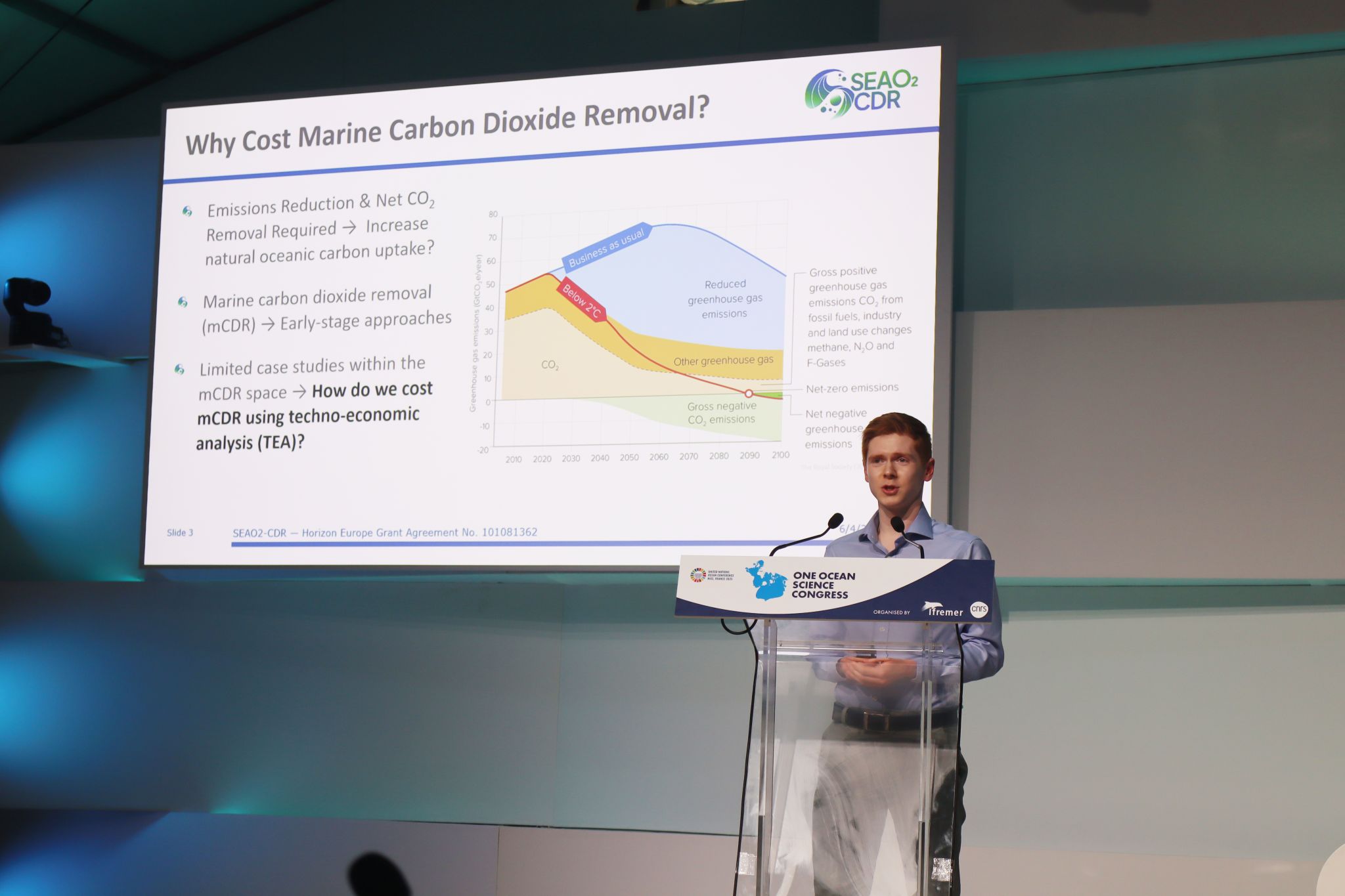
(4) Manon Berger: The Controversy over Carbon Sequestration Efficiency in Large-Scale Seaweed Farming
Prof. Manon Berger from the Dynamics and Meteorology Laboratory at the French National Centre for Scientific Research (CNRS) used numerical models to highlight the complexities of large-scale seaweed farming. While seaweed grows rapidly and has a strong carbon sequestration capacity, it may compete with other phytoplankton for nutrients, which could reduce the overall carbon sink efficiency or, in some cases, even turn the seaweed farms from carbon sinks to carbon sources. Her research showed that under iron-limited conditions, the carbon removal efficiency of seaweed could drop to as low as 24%, with some areas even releasing carbon. These findings underscore the critical role of nutrient balance and ecological feedback mechanisms in determining the effectiveness of seaweed as a carbon sink.
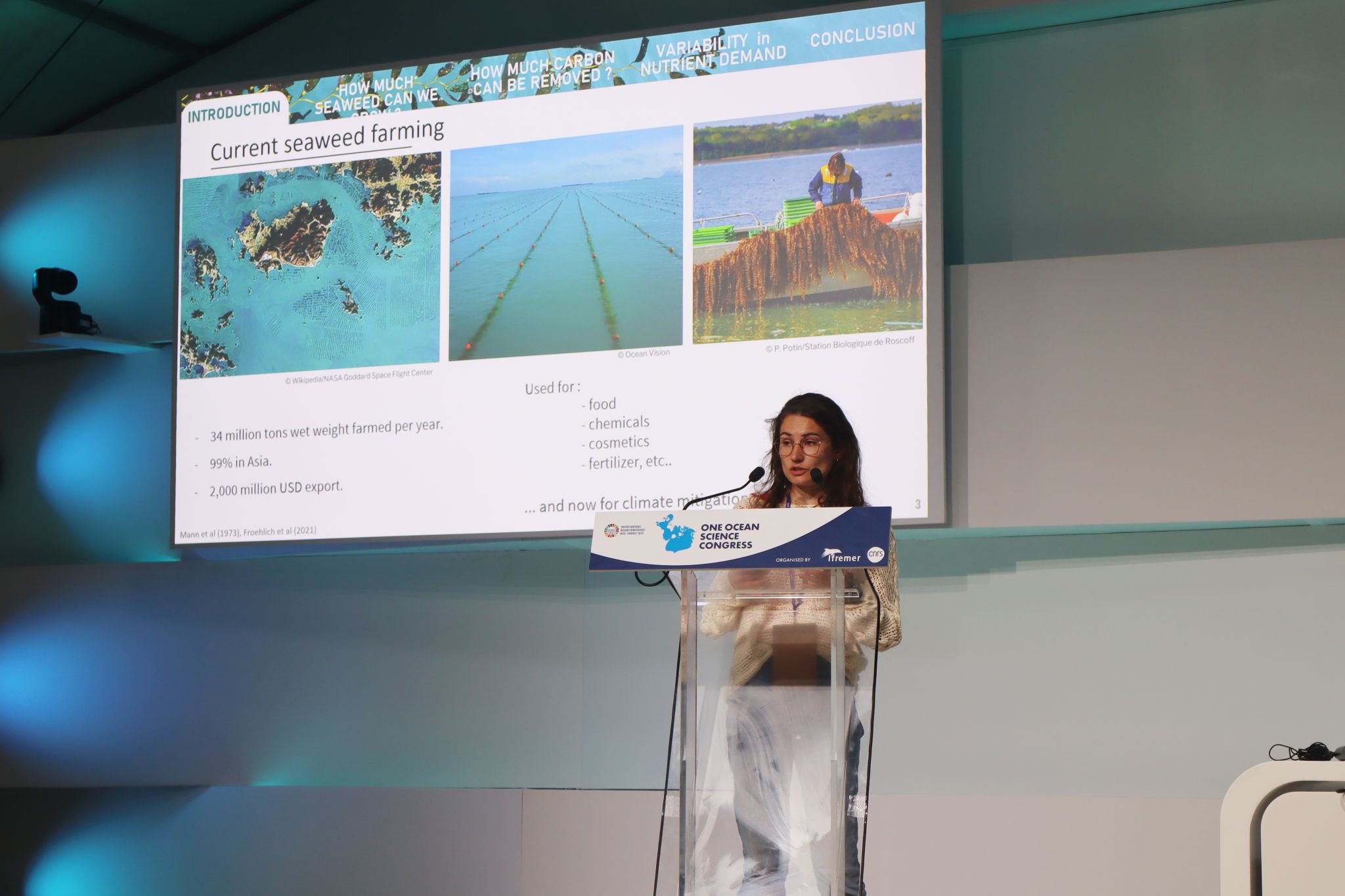
(5) Nina Bednarsek: Evaluating the Biological Effects of Ocean Alkalinity Enhancement
Prof. Nina Bednarsek from the National Institute of Biology (NIB) in Slovenia developed an ecological risk assessment framework for Ocean Alkalinity Enhancement (OAE) based on decades of ocean acidification research. Her findings revealed that approximately 25% of marine calcifying organisms, such as corals and crustaceans, could be adversely affected by increased alkalinity, while 35% of species, including certain phytoplankton, may benefit from the changes. Her research emphasizes that the "carbon removal benefits" of OAE could conflict with its "ecological restoration benefits". Therefore, Bednarsek advocates for the establishment of species sensitivity thresholds to ensure the safe and effective implementation of OAE technologies.

(6) Lina Roeschel: International Governance Challenges of Ocean Carbon Removal
Prof. Lina Roeschel from the Research Institute for Sustainability (RIFS Potsdam) in Germany highlighted current gaps in global governance frameworks. She noted that the London Protocol currently only regulates a few technologies, such as ocean iron fertilization, and lacks clear oversight for emerging techniques like ocean alkalinity enhancement and microbial carbon pump management.
Roeschel called for the establishment of a cross-convention coordination mechanism that links climate governance with biodiversity protection goals. She also emphasized the need to include diverse stakeholders, such as indigenous peoples and coastal communities, in the decision-making process to prevent technological applications from exacerbating global governance imbalances.
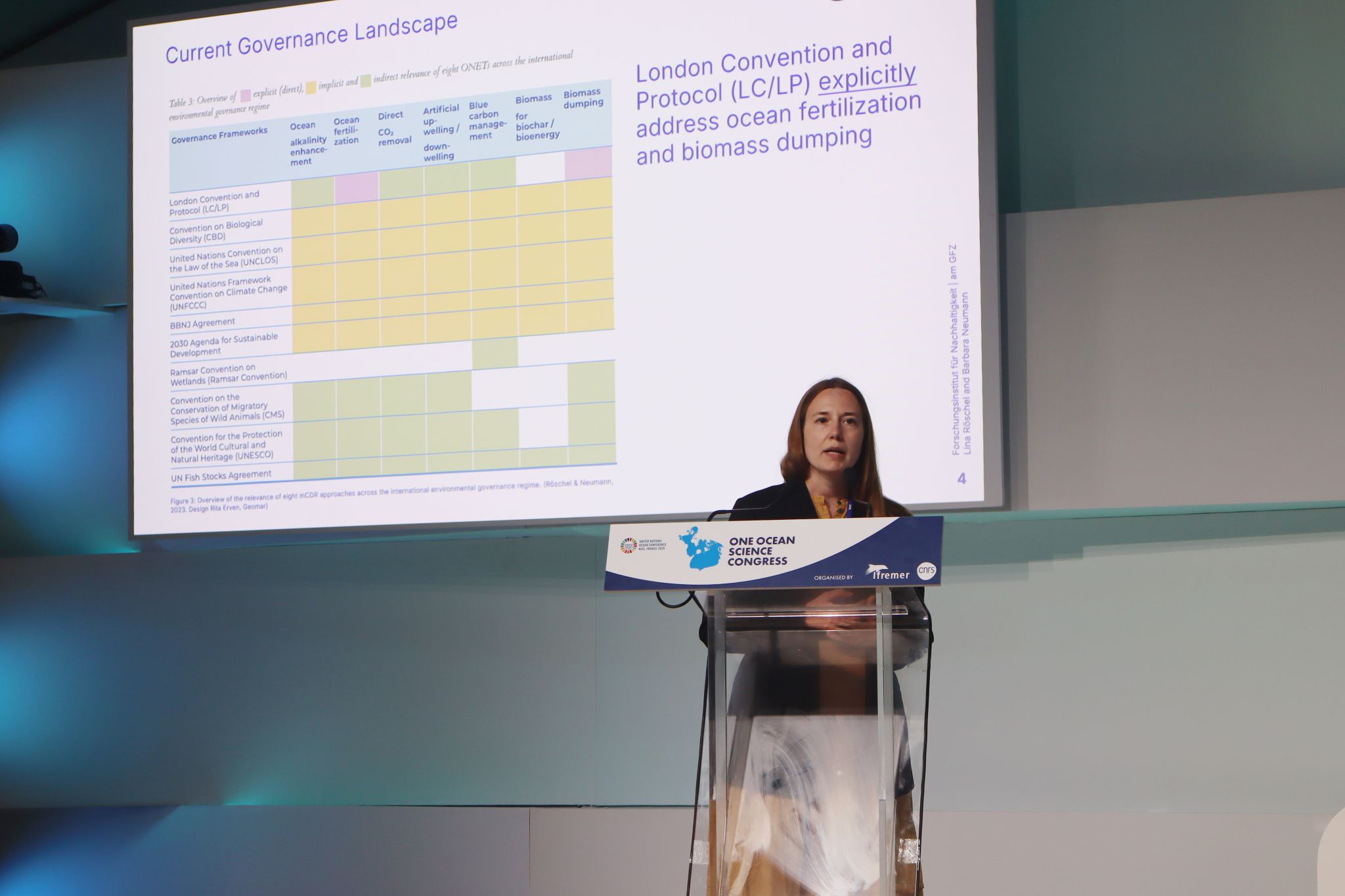
Advancing International Collaboration: Building an Innovative Framework for Carbon Emission Governance
The panel discussion, moderated by Professor Chuanlun Zhang from the Southern University of Science and Technology, brought together leading experts to share insights on advancing the development and application of marine negative carbon emission (mCDR) technologies. Key recommendations included:
1. Strengthening ecological safety validation – Conduct in-situ experiments, such as using 14C tracers to quantify microbial carbon pump efficiency, to assess ecological risks more precisely.
2. Enhancing cross-border data sharing – Develop open-access databases that consolidate long-term monitoring data across various technological pathways, thereby improving international research coordination.
3. Refining ethical and policy frameworks – Implement phased social impact assessments, define clear environmental risk boundaries, and include diverse stakeholder participation—especially from vulnerable communities—in technology governance.
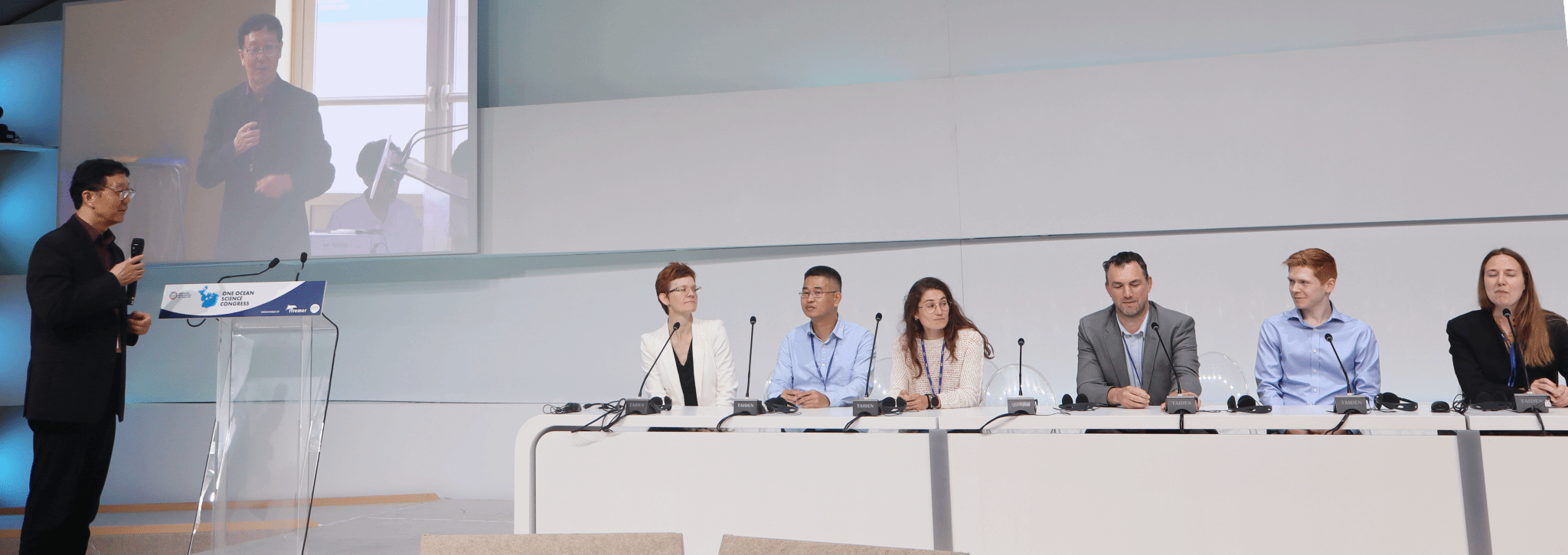
The science session laid an important foundation for the future of ocean-based carbon removal. Through in-depth scholarly exchange, it not only expanded understanding of the promise and risks of mCDR technologies but also produced systemic recommendations for shaping a scientific, equitable, and sustainable global marine carbon governance system. As ocean carbon removal becomes a vital component of the response to climate change, Global ONCE reaffirms its commitment to working with the global scientific community to unlock the ocean’s potential for carbon sequestration, transforming it into a tangible driver for carbon neutrality and a new path toward sustainable development.